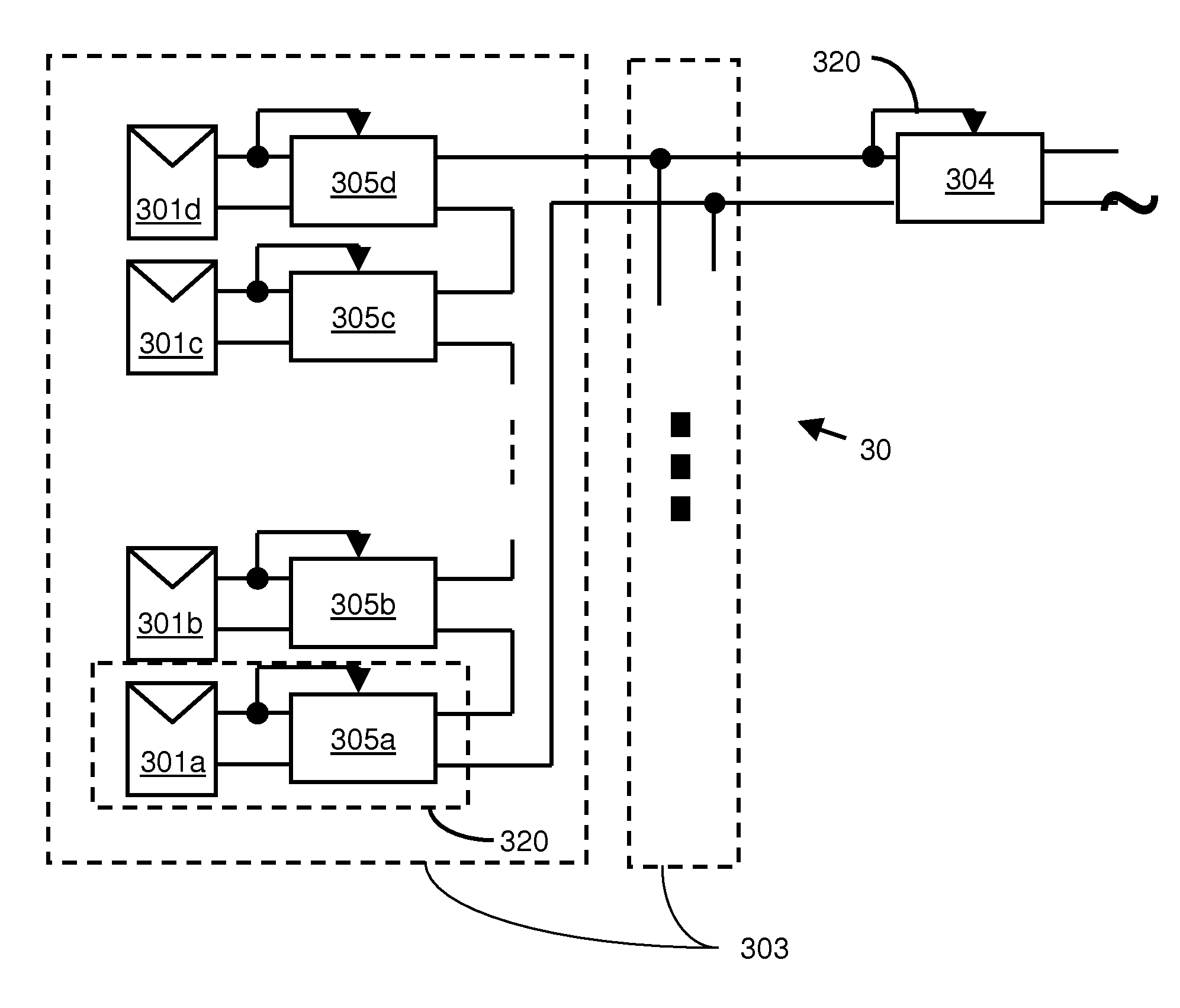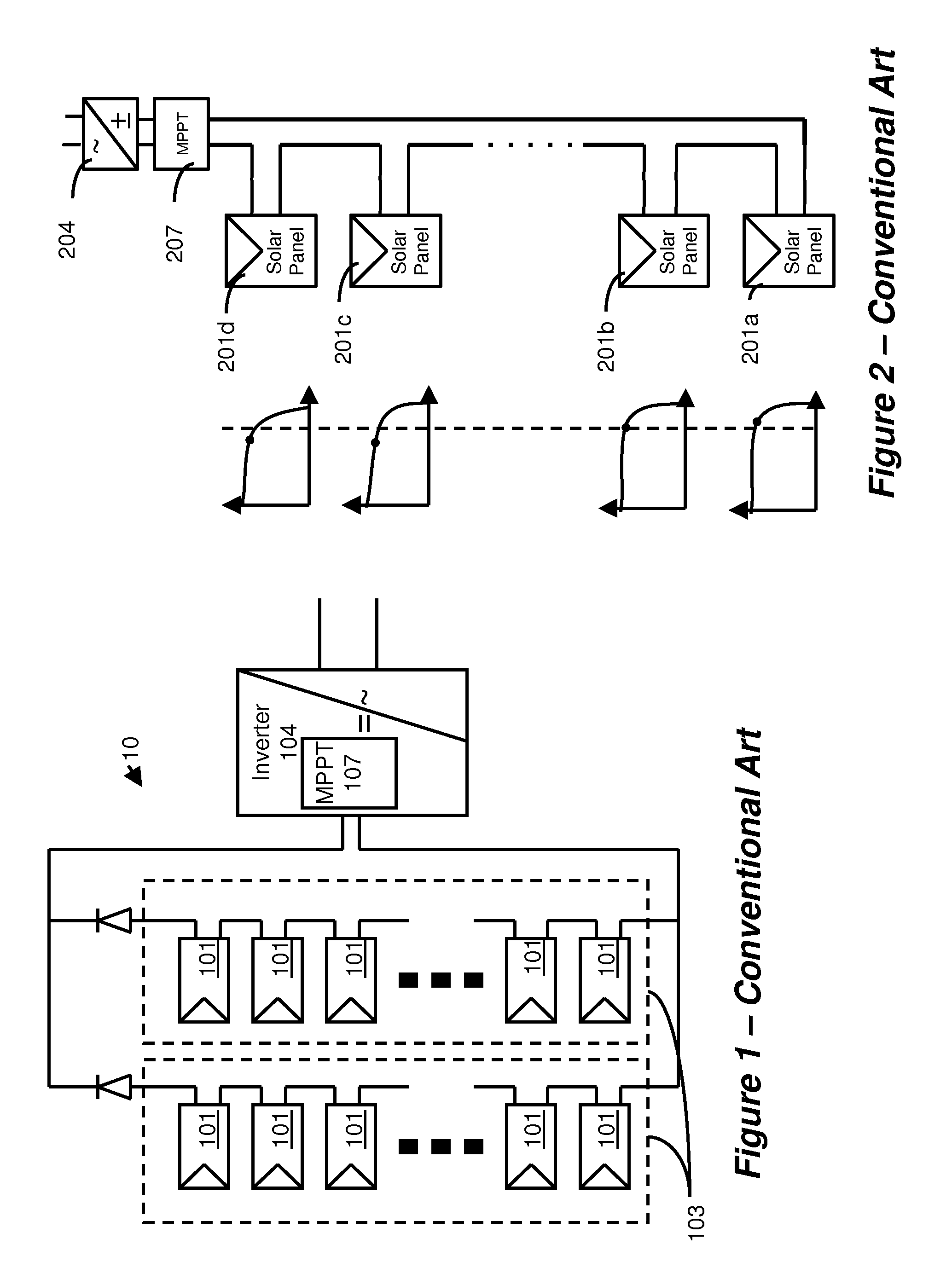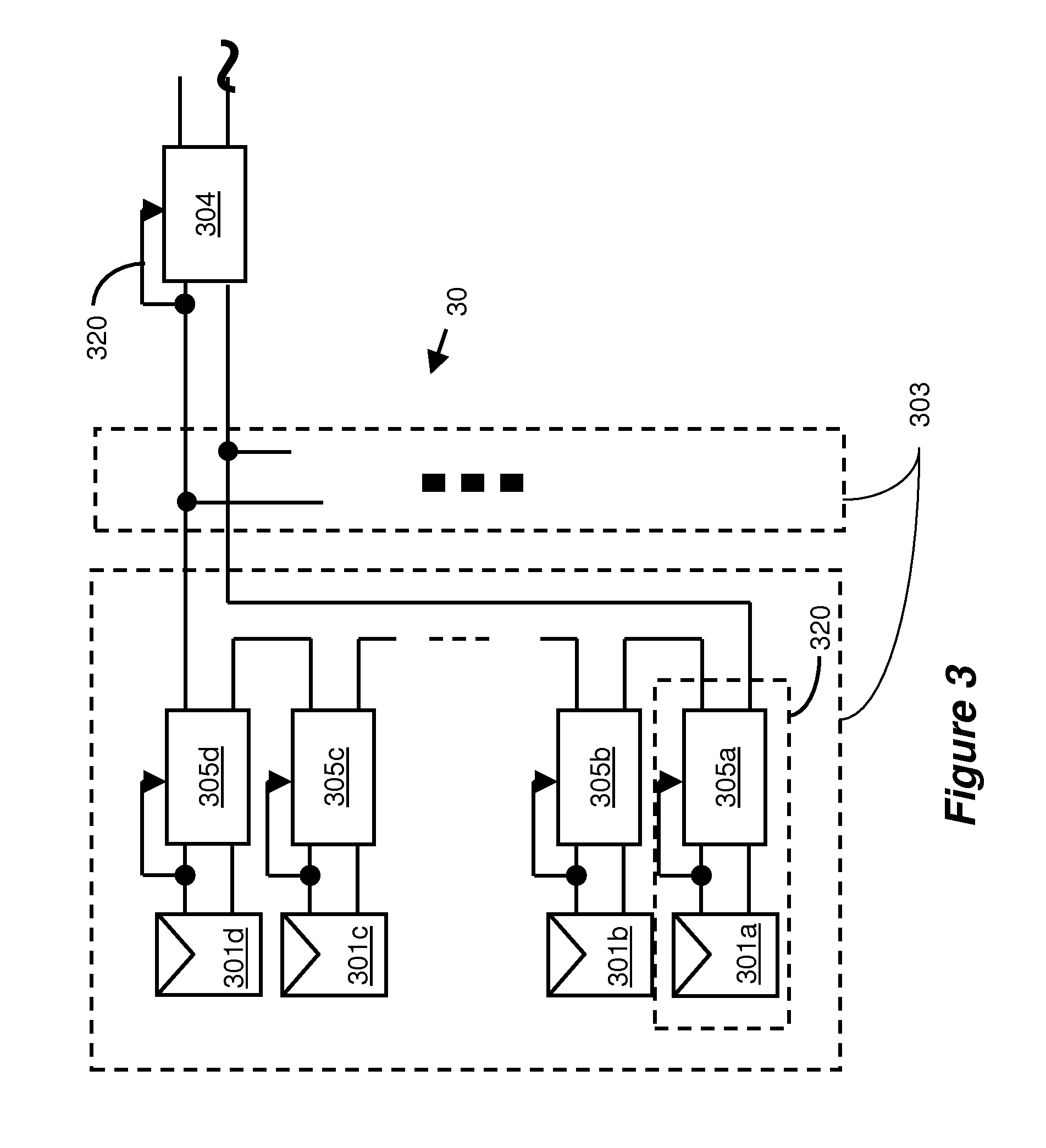Distributed power harvesting systems using DC power sources
a technology of dc power source and distribution system, which is applied in the field of photovoltaic panels to achieve the effect of reducing energy losses and reducing current output from output terminals
- Summary
- Abstract
- Description
- Claims
- Application Information
AI Technical Summary
Benefits of technology
Problems solved by technology
Method used
Image
Examples
Embodiment Construction
[0025]A conventional installation of solar power system 10 is illustrated in FIG. 1. Since the voltage provided by each individual solar panel 101 may be low, several panels may be connected in series to form a string of panels 103. For a large installation, when higher current may be required, several strings 103 may be connected in parallel to form the overall system 10. The solar panels may be mounted outdoors, and their leads may be connected to a maximum power point tracking (MPPT) module 107 and then to an inverter 104. The MPPT 107 may be typically implemented as part of the inverter 104. The harvested power from the DC sources may be delivered to the inverter 104, which converts the fluctuating direct-current (DC) into alternating-current (AC) having a desired voltage and frequency, which may be usually 110V or 220V at 60 Hz, or 220V at 50 Hz (It may be interesting to note the even in the US many inverters produce 220V, which may be then split into two 110V feeds in the elec...
PUM
 Login to View More
Login to View More Abstract
Description
Claims
Application Information
 Login to View More
Login to View More - R&D
- Intellectual Property
- Life Sciences
- Materials
- Tech Scout
- Unparalleled Data Quality
- Higher Quality Content
- 60% Fewer Hallucinations
Browse by: Latest US Patents, China's latest patents, Technical Efficacy Thesaurus, Application Domain, Technology Topic, Popular Technical Reports.
© 2025 PatSnap. All rights reserved.Legal|Privacy policy|Modern Slavery Act Transparency Statement|Sitemap|About US| Contact US: help@patsnap.com



